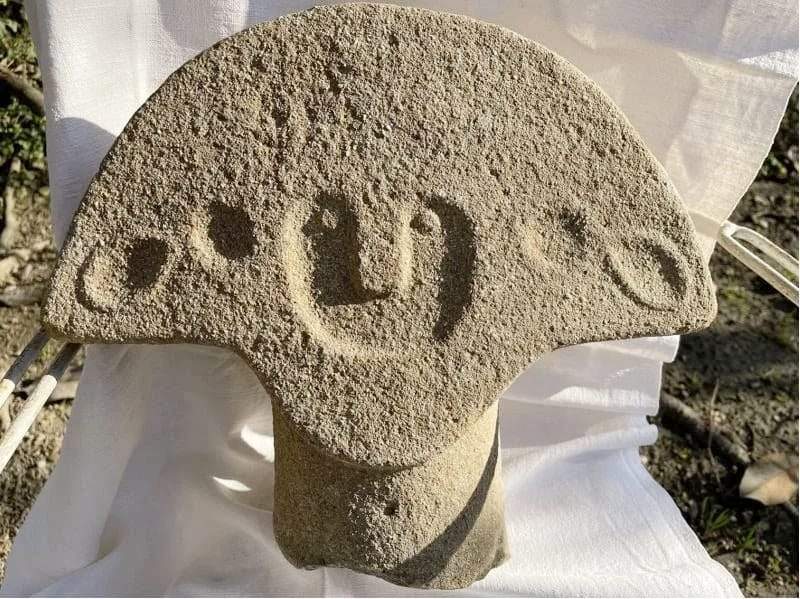Extraordinary archaeological find in the province of Massa and Carrara. In fact, in Pontremoli, near Mount Galletto, a head of a stele statue has been found in an excellent state of preservation. It was discovered by a citizen of Carrara with Pontremoli origins, Paolo Pigorini, who had noticed a bizarrely shaped rock, left by a farmer at the edge of a vegetable garden along with a pile of stones resulting from the preparation of soil for plowing. Pigorini reportedly picked up the stone and, recognizing that it was the head of a stele statue, handed it over to the director of the Pontremoli Museum of Stele Statues, Angelo Ghiretti, who recognized the work as an authentic artifact dating to the Copper Age and alerted the superintendence official, Marta Colombo, and Pontremoli Mayor Lucia Baracchini.
The stele statues are very rare prehistoric and protohistoric artifacts, typical of the Lunigiana area, produced in ancient times by the Apuan Ligurians, and depicting stylized male or female figures and connoted in genre by the objects they carry (weapons or jewelry). The statues date from between the 3rd millennium B.C.E. and the 6th century B.C.E. A total of 80 specimens are known, classifiable into three groups (A, B, and C depending on their shape), and the Pontremoli Museum holds the most. The newly found head can be classified in group “B”: it has the head with the typical half-moon shape and the eyes and nose carved out of the stone in a “U”-like shape, another characteristic element of stele statues in groups A and B (the fact, however, that the head is detached from the torso undoubtedly inscribes it in group B). It is a female head, as is evident from the stylized earrings that the statue features.
The work has already been included in the catalog of stele statues under number 85, and according to Ghiretti it dates back to about 5,000 years ago. According to the director of the Pontremoli museum, this is an unusual find because it occurred “at the mouth of the Annunziata Gorge,” where “there is the forced crossing par excellence of the valley head,” Ghiretti recalled in a note, which is a place much scoured by scholars in search of stele statues. There have, after all, been other discoveries in the area in the past: “This is the case of the findings of many Stele Statues: Groppoli on the Geriola, Talavorno on the Mangiola, Pontevecchio on the Bardine, Ponticello on the Caprio, Venelia IV on the Civiglia. It should be pointed out, however, that the ancient track did not cross the gorge (this would frequently occur only after the foundation of SS. Annunziata in the 15th century) but ascended the northern flank of Mt. Galletto and then descended back to the lower valley after intercepting on the saddle the ancient route coming from Arzengio. It is precisely on the saddle of the mountain that one must imagine that there existed, almost five thousand years ago, an alignment of statue-stelae (of which the last one found would, in all probability, be a fragment that fell into the field below), a situation that closely resembles the Sanctuary of Minucciano with its pass, a natural hinge between Lunigiana and Garfagnana.”
Ultimately, for Ghiretti this is “another important step on the extraordinary path of the stelae toward the goal, the understanding of their meaning today a little less mysterious.”
 |
| Outstanding archaeological discovery in Lunigiana: head of a rare statue-stele found |
Warning: the translation into English of the original Italian article was created using automatic tools. We undertake to review all articles, but we do not guarantee the total absence of inaccuracies in the translation due to the program. You can find the original by clicking on the ITA button. If you find any mistake,please contact us.